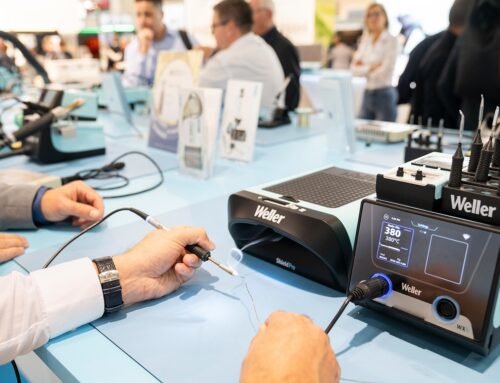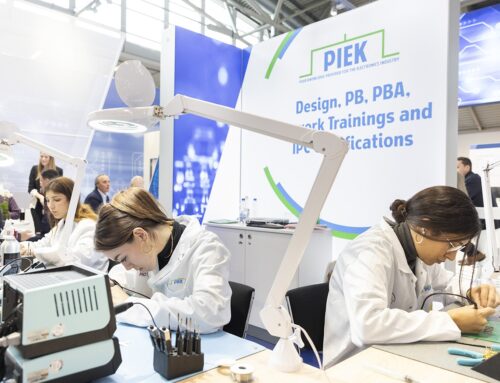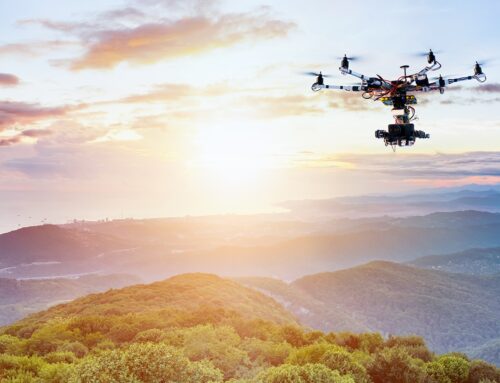Trends that can be seen or will soon be seen in the world of the electronic interconnect industry in 2022. The subjects under review now are: cybercrime, robots and medical 3-D printing. In the second article the following topics will be tackled: mobility, nanotechnology in the human body, quantum computers and automation.
Cybercrime
Cybercrime will undoubtedly increase in the time to come. Currently cybercrime is even a bigger threat to national safety and to businesses than terrorism. The development of artificial intelligence is one of the things that can combat or expose cybercrime. The attacks with ransomware on mobile devices will sky-rocket. After all, mobile phones and tablets are becoming more and more interesting targets for cybercriminals, because we are using them more and more widely, e.g. for internet banking, as mobile wallets, etc. Apart from this, the whole crypto industry is very appealing. Digital crypto exchanges are bound to be hacked and manipulated, but also producers of crypto currency will more frequently be targeted by hackers.
Robots
Robotics is already growing over 20% annually. In terms of money this means a growth to € 48,000,000, and this is the figure for the commercial robotics market alone. Robotics already has its specific applications for every sector, e.g. in the field of product quality, productivity, speed, quantity, you name it. The service industry too has discovered the blessings of robotics. In the hospitality trade and healthcare the future will see more and more robots and robotics being used. The application opportunities that artificial intelligence offers in combination with visual observation render robots useful in a great many places in any process. One example is the waste-treatment industry: robots are better able to sort waste. In agriculture and horticulture there are other options: robots can harvest fruit and vegetables, but they can also fertilise them, spray them, etc. The latest trend in robotics are the so-called cobots. Cobots are collaborative robots. They can work independently and they can navigate their surroundings. In a production process they can perform almost any action, and even cooperating with a human staff member is possible.
Medical 3-D printing
3-D printed eye implants are no longer science fiction. It is now possible to have a 3-D printed eyeball in your eye socket withing three weeks. Doctors in the Moorfield Eye Hospital
have already shown this in practice. Apart from the eye, the ear is also a body part that this technology can handle. Printing a hammer, incus and stapes and then successfully transplanting these into an ear has already been done in the Steve Biko hospital in South Africa. Let’s look at a few figures in 3-D printing in the medical world. The market for equipment to be used in the field of medical 3-D printing will rise to nearly €4.8bn in the coming years. Fractures treated with printed plaster heal 40% to 80% faster and with better results. Operations in which 3-D printed models are used generally take less time and are more successful.
Mobility
Uber has become a familiar name with most people, and its next competitor, the flying taxi, is already eager to take off. It is expected that the market for flying taxis will be over €6bn by 2030. Cities such as Dallas and Los Angeles are currently busy setting up so-called sky ports where flying taxis can collect and drop off their passengers. Flying taxies are also called eVTOLs, as they have vertical take-off and landing. They can carry a maximum of four passengers and travel at a maximum speed of 300km/h. Drones represent a completely different trend in mobility. Delivery drones will be seen more and more often, and the US have already issued new regulations for them, with Europe to follow very soon too. This means that parcel deliverers of the future will be drones.
Nanotechnology in the human body
Metronics has developed a digestible camera. This allows diseases in the intestines to be diagnosed much more easily and without too much discomfort for the patient. Nanotechnology goes one step further still. Implantable biosensors allow us to monitor and check the human body much better, so diseases such as Alzheimer’s and cancer can be discovered much faster.
Quantum computers
Google believes that it will have the first quantum computer as early as in 2029. Should this be the case, then calculations, simulations, etc. can be made millions of times faster, creating breakthroughs for numerous issues that we are now struggling with. Apart from Google there are also other companies active in developing such super computers. One of these companies is Orca Computing. They are building a quantum computer that is very similar in size to present-day desktop models. The equipment is cooled in a different way, however, making them suitable for use at room temperature.
Automation
Hyper-automation is the management slogan meant to get everything automated and interconnected, so that redundancies in procedures and processes are eliminated. The result should be a completely streamlined process, also reducing costs in the end. This obviously requires state-of-the-art technologies. Another example of automation is digital platforms. Companies participating in them can link activities from the supply side to activities on the demand side. This can lead to cost reductions, faster innovation and better insights into consumer behaviour and needs. Digital platforms will no doubt see massive growth all over the world in the years to come.






